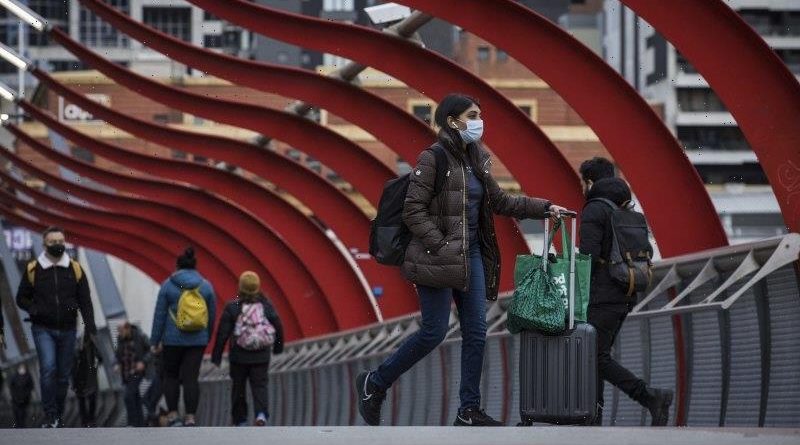No more daily case numbers: Victoria’s COVID-19 data to be reported weekly
Key points
- Victoria will now start reporting its coronavirus cases, hospitalisations and deaths on a weekly basis as part of national push to scale back on releasing daily infections
- The decision cut back daily coronavirus data reports was made at a meeting of state and territory health ministers earlier this month.
- In a statement on Wednesday, a Victorian department of health spokesman confirmed the Chief Health Officer Update is moving to a weekly update from Thursday.
In the depths of the state’s coronavirus lockdowns, when Victorians were stuck inside their homes, they waited with bated breath to learn the daily COVID-19 case numbers.
But Victoria will now start reporting its coronavirus cases, hospitalisations and deaths on a weekly basis as part of national push to scale back the release of infection numbers.
The decision to cut back daily coronavirus reports was made at a meeting of state and territory health ministers earlier this month. In a statement on Wednesday, a Victorian Department of Health spokesman confirmed the daily chief health officer update is moving to a weekly report from Thursday.
The department’s daily tweet announcing the latest COVID-19 data will now be published once a week, on Fridays, he said.
“This new start date has been chosen to align with weekly COVID-19 reporting being produced in all other Australian states and territories.”
Western Australia, NSW, the ACT, Tasmania and the Northern Territory will also end daily reports on Friday before issuing their first weekly report on September 16.
Queensland has already ended its daily reports.
State health authorities have agreed to alert the public immediately if any developments of concern related to COVID-19 arise.
However, the decision to stop releasing the daily numbers of infections was met with disappointment from Professor Adrian Esterman, who has spent more than a year tweeting to his more than 37,000 followers 24-hour updates on coronavirus transmission in every state and territory in Australia.
“It’s a great shame and it is going to make it extremely difficult to track what is happening,” Esterman, the chair of biostatistics and epidemiology at the University of South Australia, said.
“They are collecting the daily data anyway as it is a notifiable disease, so if they have the data, then why aren’t they reporting it on a more regular basis? It’s a bad move.”
Esterman suspected workforce constraints could be behind the change as well as dwindling infections and hospitalisations.
“You need people working every day, including on weekends, to be able to do the daily update,” he said.
The Omicron variant’s arrival last summer resulted in PCR testing capacity being strained and a move to self-reported rapid antigen tests to track infections. Since then, pandemic modellers have been sceptical about the value of daily case numbers, with the figures likely a significant underestimate.
The seven-day daily average of deaths in Australia has fallen from a peak of 96.1 at the end of July to under 50.
Hospitalisations have also halved from a peak of 5571 in July to about 2700, easing pressure on stressed health services.
On Wednesday, there were 222 COVID-19 cases in hospital in Victoria – with 11 active cases in ICU, including three on a ventilator, and an additional seven cleared cases in ICU.
There were 2237 new cases of COVID-19 recorded in the last 24 hours in Victoria, down from tens of thousands of new cases a day at the start of the year.
Federal Health Minister Mark Butler said health officials backed the changes.
“The move is supported by chief health officers and will ensure high quality, accurate information is provided that sheds more light on COVID dynamics,” he said in a statement.
“This approach will bring national reporting in line with all the state and territories and support the analysis of COVID trends nationally and globally. The national report will be expanded to include trends-based analysis and oral antiviral treatment uptake.”
From 11.59pm on Thursday, isolation periods for people with COVID-19 will reduce from seven days to five, for those who don’t have any symptoms on day five – excluding people who work in high-risk settings. The requirement to wear masks on domestic flights will also be lifted.
Stay across the most crucial developments related to the pandemic with the Coronavirus Update. Sign up for the weekly newsletter.
Most Viewed in National
From our partners
Source: Read Full Article



